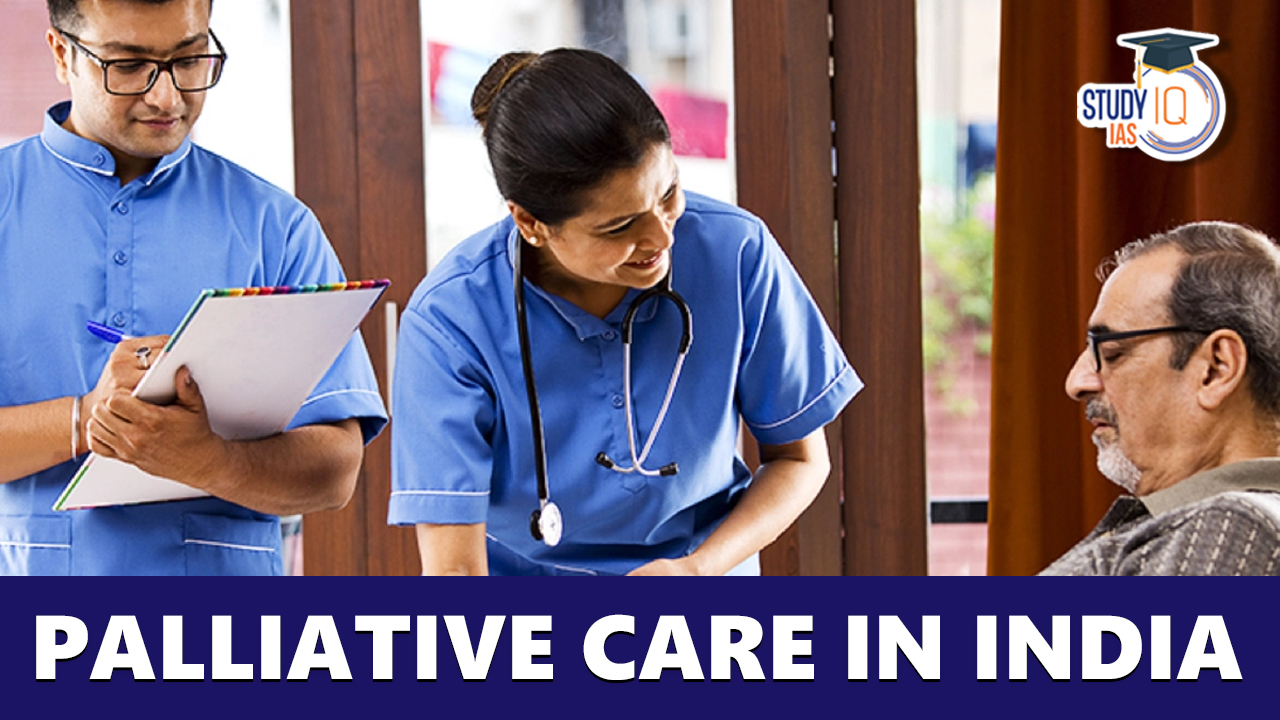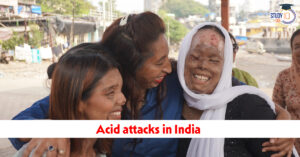Table of Contents
Context: Given the increasing burden of non-communicable diseases in India, there is a need for strengthening the palliative care system in the country.
What is Palliative Care?
- Palliative care is a specialized approach to healthcare that focuses on improving the quality of life for individuals suffering from life-limiting diseases like heart failure, kidney failure, certain neurological diseases, cancer, etc.
- WHO defined palliative care as the active total care of patients whose disease is not responsive to curative treatment.
- It is often misinterpreted as end-of-life care. However, palliative care aims to improve the quality of life by addressing the physical, psychological, spiritual, and social domains of the patients.
- When is palliative care most effective?
- Palliative care is most effective when considered early in the course of the illness.
- Early palliative care not only improves quality of life for patients but is also a cost-saving public health intervention that reduces unnecessary hospitalizations and use of health-care services.
Palliative Care at global level
- The 67th World Health Assembly in 2014 called for palliative care to be integrated into health systems at all levels.
- Furthermore, WHO explicitly recognizes that palliative care is part of the comprehensive services required for noncommunicable diseases (NCDs), and fundamental to improving the quality of life, wellbeing, comfort, and human dignity for individuals.
- Additionally, palliative care is encompassed in the definition of universal health coverage and the WHO global strategy on people-centered and integrated health services.
Current State of Palliative Care in India
- According to Health Ministry data analysis report, palliative care is accessible to only 1-2% of the estimated 7-10 million people who require it in the country, compared to the global average of 14%.
- Also, palliative care in India has largely been available at tertiary healthcare facilities in urban areas.
- The analysis also shows that while India stands at number three in terms of cancer incidence in the world, most States in the country do not even have enabling legislation or policy to integrate palliative care with treatment offered to cancer patients.
- The financial burden for cancer treatment is highest compared to all diseases, making it unaffordable for over 80% of the population.
- The cost of single hospitalization for cancer care is three times that of any other non-communicable disease.
- Currently only three States in India (Kerala, Karnataka and Maharashtra) have a palliative care policy.
Barriers to Palliative Care in India
- Policy related gaps:
| Lack of a dedicated policy |
|
| Lack of home-based care |
|
| Funding and resources |
|
- Lack of Awareness and Recognition: Palliative care is often misunderstood or overlooked, resulting in a lack of awareness among healthcare providers, policymakers, and the general public.
- Insufficient Integration: Palliative care is not adequately integrated into the healthcare system, particularly at primary and community levels
- Cultural and Social Barriers: Misconceptions and stigma associated with palliative care, such as the perception that it is only for patients with cancer or limited to the last weeks of life, can hinder access and understanding.
- Disease-Focused Healthcare System: The healthcare system in India tends to be focused on disease treatment rather than comprehensive, patient-centered care.
- Lack of Trained Medical Staff: Palliative care requires specialized training in pain management, care, and empathy. However, there is a shortage of well-trained doctors and medical staff in palliative care, which hampers the delivery of quality services.
- Neglected Pediatric Palliative Care: There is a significant gap in pediatric palliative care services. Children facing chronic and life-limiting conditions often do not receive the specialized care and support they require, highlighting the need for urgent attention in this area.
Way Forward
- Systemic approach: India needs a systematic approach to improving palliative care. These improvements include increasing the workforce, better application of policies, good political support, and educating health care workers and patients requiring palliative treatment.
- Role of states: Each state needs to develop its own policy that suits its needs and its social and cultural background. Community models for the provision of home-based palliative care need to be implemented all over the country.
- Palliative medicine in curriculum: Introduction of palliative medicine into the curriculum of undergraduate education of doctors and nurses is recommended as an efficient way to broaden the base of palliative care coverage at the national level.
- Trained professionals: Palliative care requires end-of-life conversations. So, there is a need for training professionals to work in a collaborative manner. People must also make a living will to designate a surrogate who can take decisions on their behalf when they are incapacitated.
- Rehabilitation of family members: Apart from the patient, the survival and safety of members left behind is also a concern that should be addressed, especially in the case of India where it is missed.
Case Study: Kerala’s Exemplary Model of Palliative Care
- Kerala has emerged as a global leader in palliative care. Despite limited resources and a challenging healthcare landscape, Kerala has developed a comprehensive and community-based approach.
- Key Elements of Kerala’s Palliative Care Model:
- Community Engagement: Local communities, volunteers, and non-governmental organizations (NGOs) play a pivotal role in delivering care.
- Government Support: It has implemented policies and initiatives that prioritize palliative care services, ensuring accessibility and affordability.
- Comprehensive Training Programs: Kerala has established extensive training programs to equip healthcare professionals, volunteers, and family caregivers with the knowledge and skills required for effective palliative care.
- Integration into Primary Healthcare: Palliative care is integrated into the existing primary healthcare system in Kerala, ensuring that it reaches patients at all stages of their illness.
- Collaboration and Networking: Kerala’s success in palliative care is attributed to effective collaboration and networking among various stakeholders.
Conclusion: The 67th World Health Assembly in 2014 called for palliative care to be integrated into health systems at all levels. However, the realities on the ground are a far cry from what is desirable. It is crucial that we acknowledge the ongoing pandemic of non-communicable diseases in India and take immediate steps to strengthen our palliative care services.


 New Window of Opportunity for India amid...
New Window of Opportunity for India amid...
 Cetacean Morbillivirus: Meaning, Feature...
Cetacean Morbillivirus: Meaning, Feature...
 Acid Attacks in India: Causes, Laws, Sta...
Acid Attacks in India: Causes, Laws, Sta...

























